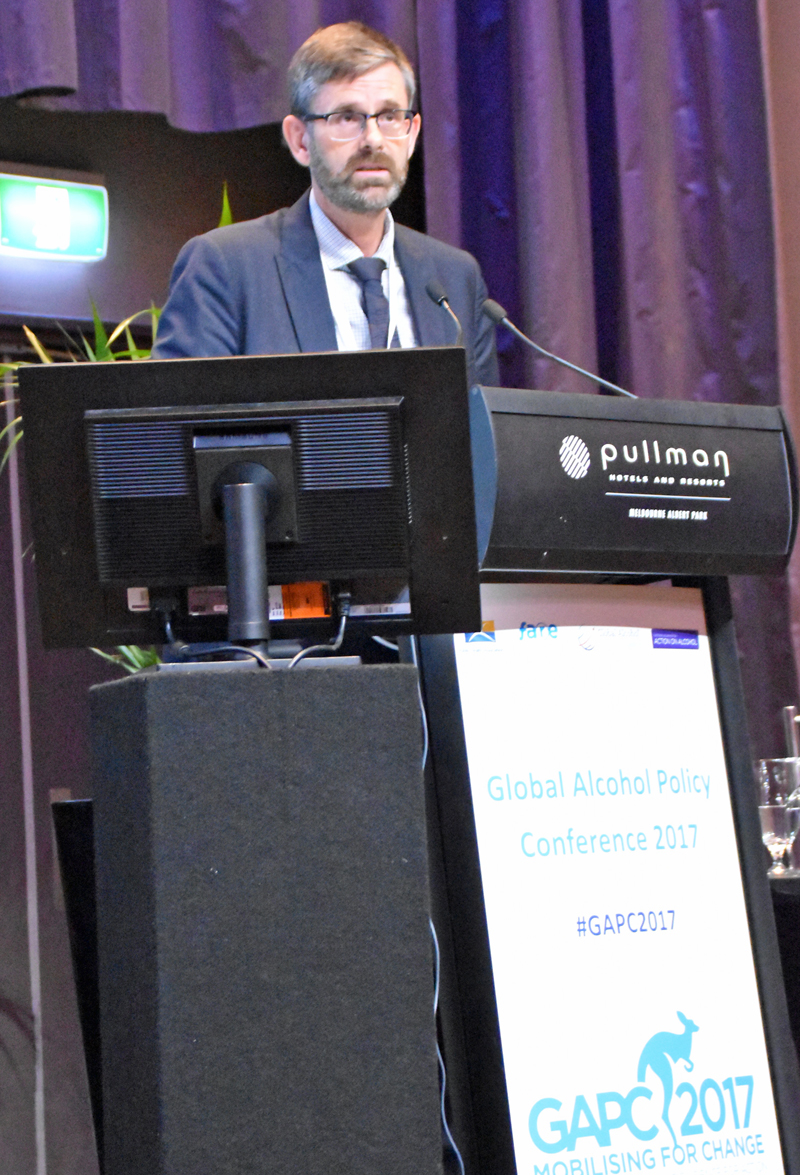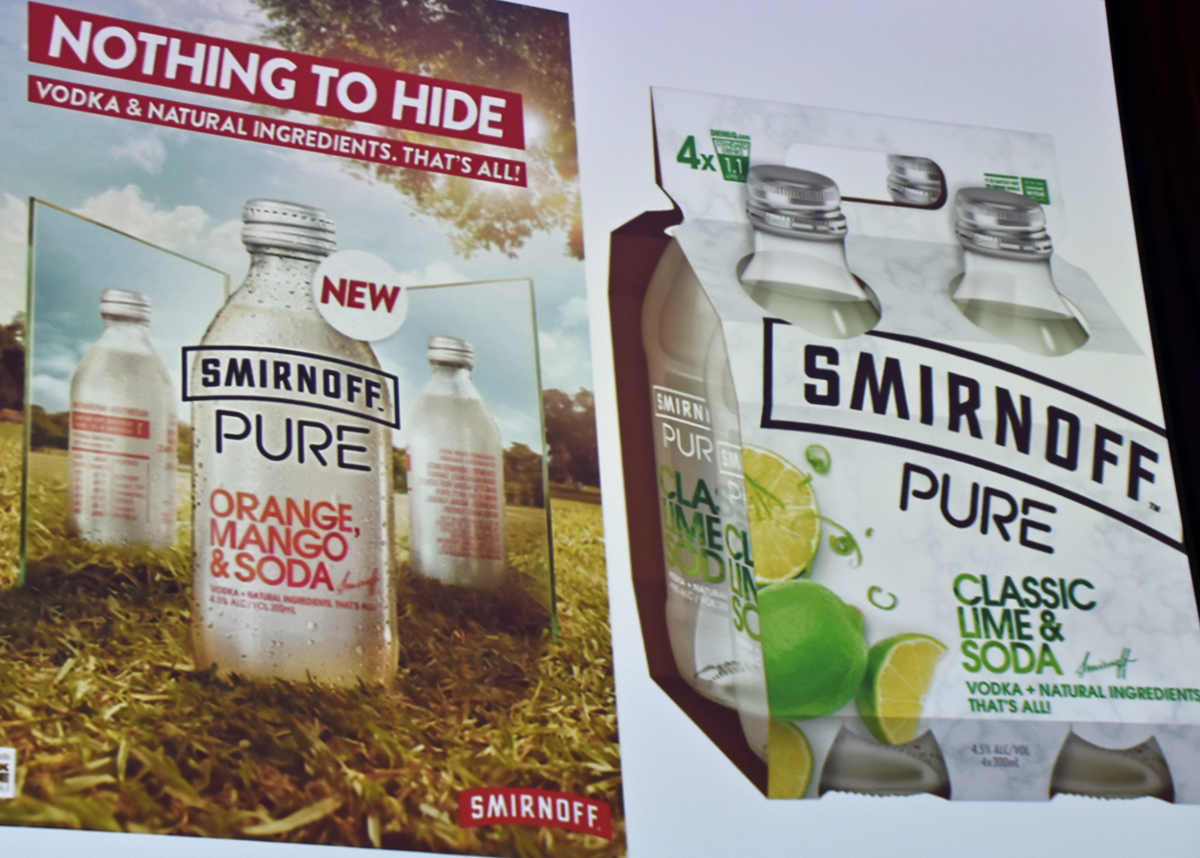GAPC2017 opened in Melbourne
Focus on how evidence can be translated into action to reduce alcohol harm
A tune played on a didgeridoo welcomed the around 300 participants to the Global Alcohol Policy Conference 2017 in Melbourne and to the land of the Wurindjeri people of the Kulin Nation. After this traditional opening the conference dived directly into the question of how alcohol harm can be reduced through advocacy and policy interventions.
All speakers in the opening session referred to the size of the alcohol problem through figures both from the national and global level. This series of alarming figures were used to argue for the need for stronger alcohol policy interventions on all levels. The conference co-chair Michael Moore underlined in his opening that the aim of the GAPC 2017 conference was to discuss how evidence can be translated into political action.
 The chair of the Global Alcohol Policy Alliance (GAPA) professor Sally Casswell said that policy drives culture and shapes culture. “An increased focus on alcohol control policies is therefore needed. We are not doing particularly well. National alcohol policy development has stalled in many countries and the alcohol field is under-funded and there has been no funding breakthrough lately. Life years lost because of alcohol has increased by 25 per cent from 1990 to 2016”, professor Casswell said with reference to the latest version of the Global Burden of Disease study recently published in The Lancet.
The chair of the Global Alcohol Policy Alliance (GAPA) professor Sally Casswell said that policy drives culture and shapes culture. “An increased focus on alcohol control policies is therefore needed. We are not doing particularly well. National alcohol policy development has stalled in many countries and the alcohol field is under-funded and there has been no funding breakthrough lately. Life years lost because of alcohol has increased by 25 per cent from 1990 to 2016”, professor Casswell said with reference to the latest version of the Global Burden of Disease study recently published in The Lancet.
Several of the speakers in the conference opening pointed to the interference of the alcohol industry as an important obstacle to introduction of evidence-based policies in more countries. “The industry is crawling all over”, professor Casswell said and concluded that it is a public health priority to have policy development processes without the influence of commercial interests.
Dag Rekve addressed the conference on behalf of the World Health Organization (WHO) where a new leadership now has been installed. He could report that the new Director-General, Dr. Tedros Adhanom Ghebreyesus has his new team in place and a new set of policy priorities for his term in office. Universal health coverage is on that priority list, and the same is women, children and adolescent health, both with strong links to the alcohol issue, band Mr. Rekve underlined that ongoing processes like the work around the WHO Global Alcohol Strategy will in any case continue as before. However, the big challenge remains, namely to find incresaed resources for alcohol work in the WHO.
 Dag Rekve (picture right) also pointed to the fact that we are not doing too well in global alcohol policies. He expressed worries around possible increases in alcohol consumption in developing societies and in Africa in particular, a continent that has been defined as the next battlefield by multinational alcohol companies.
Dag Rekve (picture right) also pointed to the fact that we are not doing too well in global alcohol policies. He expressed worries around possible increases in alcohol consumption in developing societies and in Africa in particular, a continent that has been defined as the next battlefield by multinational alcohol companies.
The WHO representative discussed briefly the interesting figures for abstention rates in the world that indicate that around 62 per cent of the adult population did not drink the last 12 months. That contributes considerably to holding the global alcohol consumption level at its recent level of 6,4 liter pure alcohol per capita.
Dag Rekve referred to four key drivers for high abstention rates; poverty, gender roles, lifestyle choices and religion. “We could expect big changes on all these four areas over the next 30 to 50 years. What implications will that have for the alcohol consumption levels, in particular in countries that now have relatively low levels”, he asked.
Dag Rekve concluded his intervention by saying that it is the obligation of governments to intervene in the marketplace with regulatory measures - for the public good.
During the next two conference days critical light will be shed on alcohol marketing practices in different parts of the world. But already on the first day a number of speakers could present interesting examples of the latest news from alcohol marketing, in particular messages and images aimed at reaching the young and modern women of the world.
David Jernigan showed in his presentation how alcohol is being “pink-washed” by linking alcohol brands to campaigns against breast cancer. Ironically, as 15 per cent of breast cancer cases in the US alone are caused by alcohol. Danica Keric gave examples of how marketing campaigns are used to make vodka drinking attractive for health-conscious young women by using words as natural, no additives, pure, sugar-free, gluten-free, carb-free and green.


RELATED ARTICLES
- New report highlights benefits of policy measures to prevent harmful alcohol consumption
- Spirits industry afraid of their own ingredients?
- Alcohol use - a barrier to health and to the achievement of the SDGs
- Government investments in alcohol industry up against the wall
- Abstracts for GAPC 2020 – deadline 29 July 2019
- A regional African alcohol coordination mechanism is needed
- New book reveals a series of unethical business practices by Heineken in Africa
- Next GAPC to be held in Dublin in March 2020
- SAFER – a new WHO initiative to boost national alcohol policy processes
- Trouble Brewing

